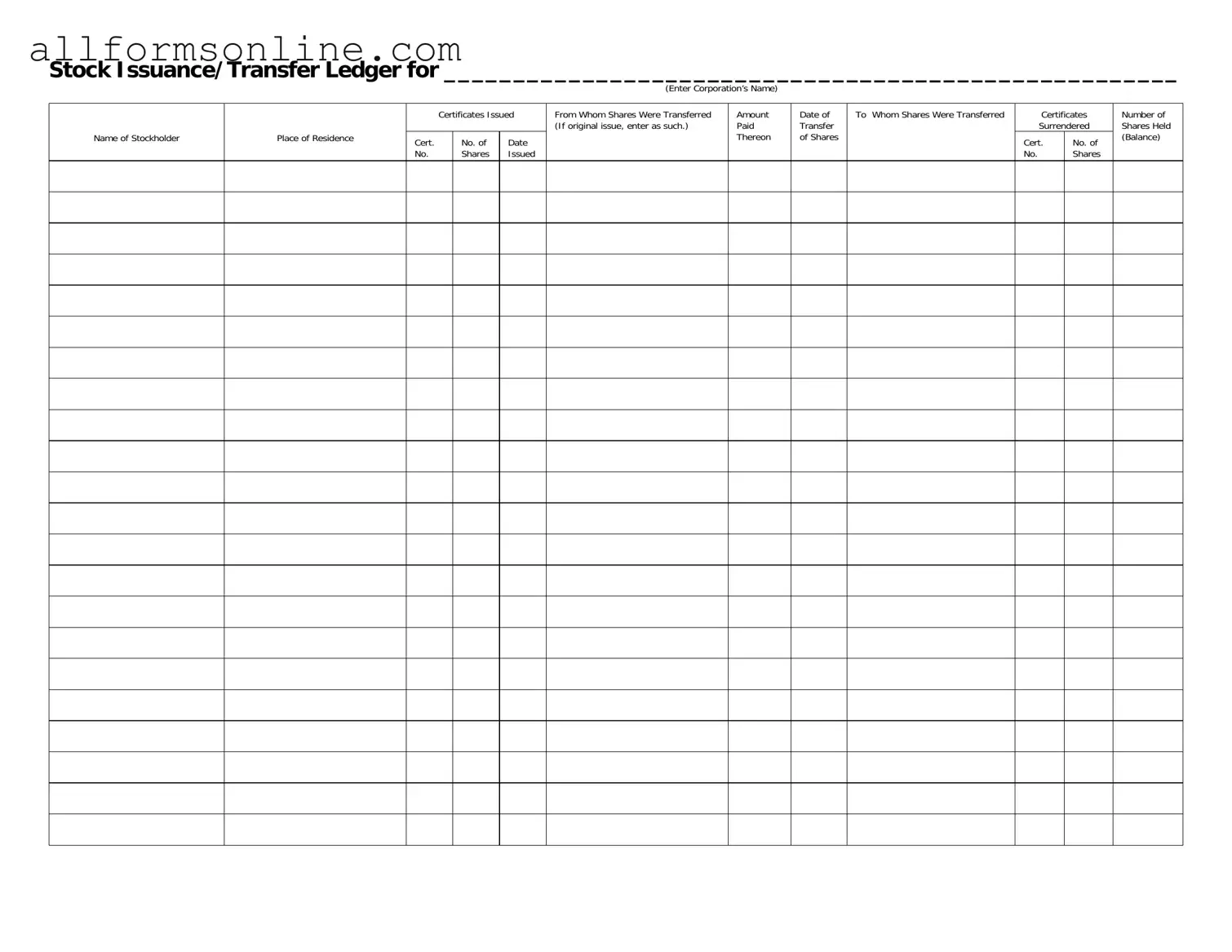What is the purpose of the Stock Transfer Ledger form?
The Stock Transfer Ledger form is used to record the issuance and transfer of stock within a corporation. It helps maintain an accurate record of stock ownership, ensuring that all transactions are documented properly for both the corporation and its shareholders.
What information do I need to fill out the form?
You will need the corporation’s name, the name of the stockholder, their place of residence, the certificate numbers, the number of shares issued, and the details of the transfer, including the amount paid and the date of transfer. This information ensures that all transactions are clear and traceable.
Who is responsible for maintaining the Stock Transfer Ledger?
The corporation's secretary or an appointed officer typically maintains the Stock Transfer Ledger. It is crucial for this individual to keep the ledger updated to reflect any changes in stock ownership accurately.
What should I do if I lose a stock certificate?
If a stock certificate is lost, the stockholder should notify the corporation immediately. A replacement certificate may need to be issued, and the Stock Transfer Ledger must be updated accordingly to reflect this change.
Can I transfer shares without using the Stock Transfer Ledger form?
While it is possible to transfer shares informally, it is highly recommended to use the Stock Transfer Ledger form. This ensures that all transfers are officially recorded, protecting both the seller and the buyer in the event of disputes.
What happens if there is an error on the form?
If an error is found on the Stock Transfer Ledger form, it should be corrected as soon as possible. Both the person making the correction and the person affected by the error should initial the changes to maintain transparency and accuracy.
Is there a fee associated with transferring shares?
Fees for transferring shares can vary depending on the corporation's policies. It is advisable to check with the corporation to understand any potential costs involved in the transfer process.
How does the Stock Transfer Ledger affect shareholder rights?
The Stock Transfer Ledger is crucial for determining shareholder rights. Only those listed in the ledger as stockholders have the right to vote and receive dividends. Therefore, accurate record-keeping is essential for protecting these rights.
What should I do if I have more questions about the Stock Transfer Ledger?
If you have additional questions, it is best to contact the corporation directly. They can provide specific guidance and address any concerns you may have regarding the Stock Transfer Ledger and the stock transfer process.
